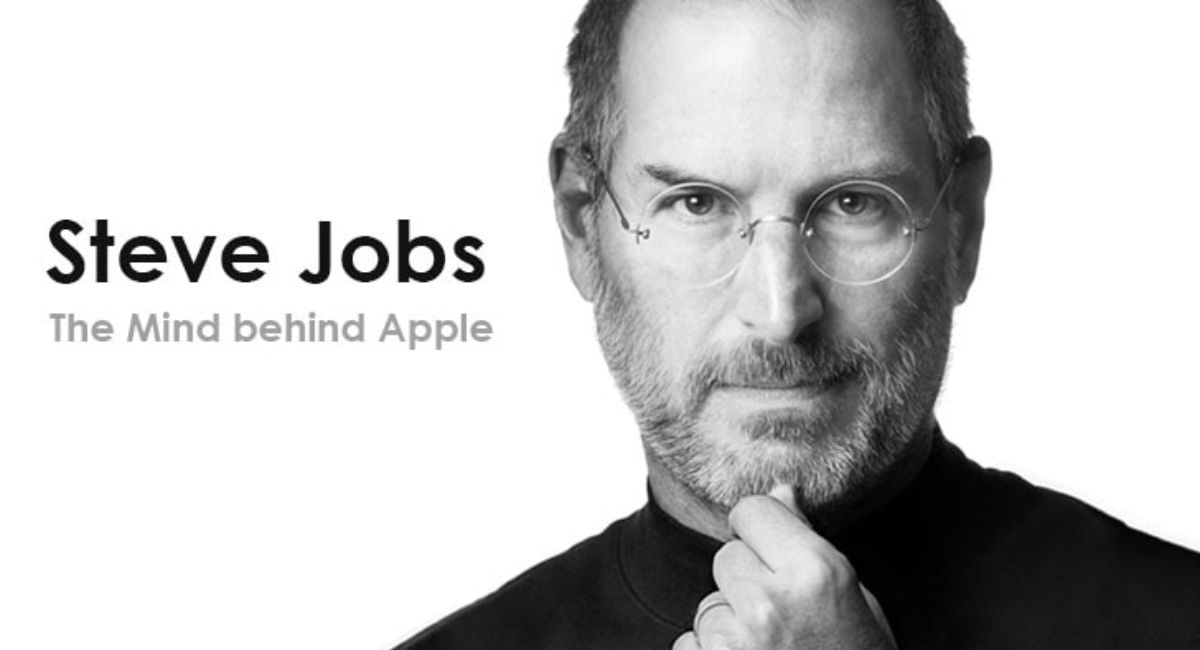Steve Jobs’ entrepreneurial journey with Apple is one of the most remarkable stories in modern business history. From a small garage in Cupertino to becoming one of the world’s most valuable companies. The Apple story represents innovation, vision, and resilience.
Jobs wasn’t just a founder, he was a visionary entrepreneur who saw technology not as machinery, but as a way to connect people emotionally. His belief in merging art with engineering helped Apple redefine industries, from personal computers to smartphones and digital media.
READ MORE : The Entrepreneur Insights: Sam Altman & the AI Revolution
Steve Jobs Apple journey:
- Started Apple in 1976 with Steve Wozniak, driven by curiosity and creativity.
- Transformed Apple from a startup into a global technology icon through design-led innovation.
- Introduced products like the Macintosh, iPhone, and iPad, revolutionizing how people interact with technology.
- Built a strong brand identity centered around simplicity, innovation, and emotional appeal.
Each chapter in Steve Jobs’ Apple legacy showcases how determination, creativity, and focus on user experience can turn bold ideas into cultural revolutions. His relentless pursuit of perfection made Apple a symbol of entrepreneurial excellence and innovation worldwide.
Early Life and Entrepreneurial Beginnings of Steve Jobs

The early life of Steve Jobs laid the foundation for one of the most transformative journeys in business history. Long before the world knew Apple, Jobs was already fascinated by innovation, creativity, and technology. His childhood curiosity and relentless drive shaped the roots of the Steve Jobs Apple story, turning him from a curious teenager into a global visionary.
Influences that shaped Steve Jobs’ entrepreneurial mindset:
- Curiosity and Experimentation: From tinkering with electronics in his garage to attending tech clubs, Jobs constantly explored new possibilities.
- Exposure to Silicon Valley culture: Surrounded by engineers and innovators, he absorbed the values of innovation and disruption.
- Creative thinking: Influenced by calligraphy, design, and Eastern philosophy, Jobs believed technology should be both functional and beautiful.
The Foundation of the Steve Jobs Apple Story
The official beginning of the Steve Jobs Apple story started in 1976, when Jobs partnered with Steve Wozniak and Ronald Wayne. Together, they founded Apple Computer Inc.
What made Apple different was Jobs’ vision: to make technology personal, intuitive, and inspiring. While Wozniak engineered the hardware, Jobs envisioned how it should look, feel, and connect with people emotionally.
Milestones and challenges in the foundation phase:
- Apple I (1976): Their first product, hand-built by Wozniak and marketed by Jobs, became a modest success that attracted early investors.
- Apple II (1977): One of the first mass-produced personal computers, transforming Apple into a fast-growing company.
- Startup struggles: Limited funding, competition, and internal conflicts tested Jobs’ leadership early on.
- Unwavering belief: Despite setbacks, Jobs maintained a clear vision for Apple’s identity innovation through simplicity.
Apple’s Growth Innovation and Global Impact
The phenomenal growth of Steve Jobs Apple under him & marked a turning point in the world of technology and entrepreneurship. From a small startup to a trillion-dollar company, Steve Jobs’ Apple journey became a global symbol of innovation, creativity, and visionary leadership.
Apple’s growth was not accidental; it was engineered through bold innovation and design-led thinking. Jobs’ approach focused on the seamless fusion of hardware, software, and user experience, creating products that didn’t just meet needs but inspired desire.
Apple’s growth under Steve Jobs:
- Relentless innovation: Each product launch sets new industry benchmarks.
- Customer obsession: Apple designed products that connected emotionally with users.
- Design excellence: Jobs insisted that beauty and functionality go hand in hand.
- Brand storytelling: Every Apple product told a story of creativity, precision, and trust.
Visionary Leadership and Product Revolution
At the core of the Steve Jobs Apple story lies his visionary leadership, a leadership style that challenged norms and inspired an entire generation of entrepreneurs. Jobs didn’t just sell products; he sold experiences, reshaping how people interact with technology across the globe.
His product revolution began with a deep belief that innovation thrives at the intersection of technology and art. This vision guided Apple’s breakthrough products, each of which reshaped industries and consumer expectations.
Apple’s Key Product Innovations Under Steve Jobs
| Year | Product | Innovation | Global Impact |
| 1984 | Macintosh | First user-friendly GUI computer | Made personal computing accessible |
| 2001 | iPod | Music in your pocket | Redefined digital music experience |
| 2007 | iPhone | Touchscreen smartphone | Revolutionized communication |
| 2010 | iPad | Portable tablet device | Opened new possibilities for content and media |
READ MORE : How Artificial Intelligence Is Changing Daily Life
Steve Jobs Apple & his visionary leadership:
- Perfectionist mindset: Jobs pushed teams to deliver flawless performance and design.
- Focus on user experience: Every Apple product was created with the user’s lifestyle in mind.
- Simplicity as sophistication: Jobs believed simplicity was the ultimate form of innovation.
- Risk-taking: From abandoning the floppy disk to introducing touchscreen tech, Jobs wasn’t afraid to lead change.
- Culture of innovation: He built a workplace that encouraged creativity, boldness, and thinking differently.
Impact of the product revolution on Apple’s global success:
- Apple became a trendsetter in innovation, influencing competitors and industries alike.
- Its ecosystem of products and services (Mac, iPhone, iPad, iTunes, App Store) built loyalty and long-term engagement.
- The Steve Jobs Apple philosophy to combine technology with emotion made Apple more than a brand; it became a lifestyle.
Entrepreneurial Lessons from Steve Jobs Apple Journey
The Steve Jobs Apple story is more than a tale of a successful company; it’s a masterclass in entrepreneurship, leadership, and innovation. Entrepreneurs worldwide study Jobs’ journey to understand how vision, creativity, and persistence can turn a small startup into a global powerhouse.
Entrepreneurial lessons from Steve Jobs Apple journey:
- Vision drives success: Jobs’ clear, ambitious vision for Apple guided every product and decision.
- Innovation is non-negotiable: He believed that staying ahead requires constant creativity and challenging the status quo.
- User experience matters: Apple products weren’t just functional; they were intuitive, elegant, and emotionally engaging.
- Brand storytelling strengthens impact: Jobs showed that a compelling narrative around a product builds loyalty and inspires trust.
Leadership, Creativity, and Vision
Steve Jobs’ leadership style was unique: it combined demanding excellence with the freedom to innovate. His Apple approach was to encourage creativity while insisting on perfection, which became a blueprint for entrepreneurs seeking to create iconic brands.
READ MORE : Smart Ways to Reduce Business Costs Without Cutting Quality
Leadership Lessons from Steve Jobs Apple Journey
| Lesson | Description | Entrepreneurial Takeaway |
| Vision | Jobs always looked beyond the present | Set ambitious goals to inspire teams |
| Creativity | Innovation guided by aesthetics and function | Encourage risk-taking and original ideas |
| Focus | Eliminating distractions to prioritize essentials | Concentrate on products that matter most |
| Resilience | Learning from failures and setbacks | Turn challenges into opportunities |
| Brand Storytelling | Emotional connection with customers | Build loyalty and long-term engagement |
Global Expansion and Apple’s Legacy
The story of Apple is not only about innovation but also about building a global empire. Under Jobs’ leadership, Apple evolved from a Silicon Valley startup into a world-renowned brand, influencing technology, design, and culture across continents. His strategic vision for global expansion ensured that Apple products and experiences reached millions of users, creating a loyal international customer base.
Aspects of Apple’s global growth under Steve Jobs:
- Strategic market entry: Apple carefully selected regions to expand, ensuring brand consistency and premium positioning.
- Ecosystem approach: Seamless integration of devices, software, and services built customer loyalty worldwide.
- Premium branding: Jobs emphasized that Apple products should be aspirational yet functional, driving global recognition.
- Cultural adaptation: Localization of products and services helped Apple resonate with diverse markets.
From Silicon Valley to Global Influence
Steve Jobs Apple started in a small garage in Silicon Valley, but his vision for Apple always had a global impact in mind. He believed that innovation should not be confined to one region but shared with the world, creating products that people everywhere could use, enjoy, and rely on.
READ MORE : Traditional Business Strategy vs AI-Driven Strategy
Global Presence of Steve Jobs Apple
| Region | Market Share | Strategic Impact |
| North America | 45% | Core market; brand loyalty and revenue leadership |
| Europe | 28% | Strong retail and distribution network |
| Asia-Pacific | 22% | Rapid growth; emerging tech markets |
| Other regions | 5% | Niche expansion; brand presence |
Conclusion:
The Steve Jobs Apple story shows how visionary leadership, innovation, and persistence can turn a small startup into a global powerhouse. Jobs created products that combined technology, design, and usability, setting new standards for entrepreneurship and innovation.
His legacy inspires entrepreneurs worldwide, showing that creativity combined with strategic thinking and resilience can transform industries. Apple continues to reflect his vision, maintaining global recognition, customer loyalty, and a culture of excellence.
Steve Jobs Success Story: Apple Founder’s Journey from Rags to Riches ( source )
Frequently Answer Questions:
- Who founded Apple with Steve Jobs?
Steve Wozniak and Ronald Wayne co-founded Apple with Steve Jobs in 1976. - What made Steve Jobs an innovative entrepreneur?
His focus on simplicity, design, and user-centered technology. - How did Steve Jobs change Apple’s direction?
By merging creativity with business strategy, launching iconic products. - When did Apple become a global brand?
During the 2000s, with the iPod, iPhone, and iPad redefining tech markets. - What are Steve Jobs’ leadership principles?
Focus, innovation, and emotional connection with users. - How did Steve Jobs influence modern entrepreneurship?
He inspired founders to pursue passion-driven innovation. - What is Apple’s core business philosophy?
“Think Different” – merging technology and human creativity. - What products symbolize Steve Jobs’ legacy?
The iPhone, MacBook, iPod, and iPad. - How did Steve Jobs impact the tech industry globally?
By setting new standards in product design, branding, and user experience. - Where can I learn more about Steve Jobs’ story?
Visit Apple’s official page or the Steve Jobs biography by Walter Isaacson.






